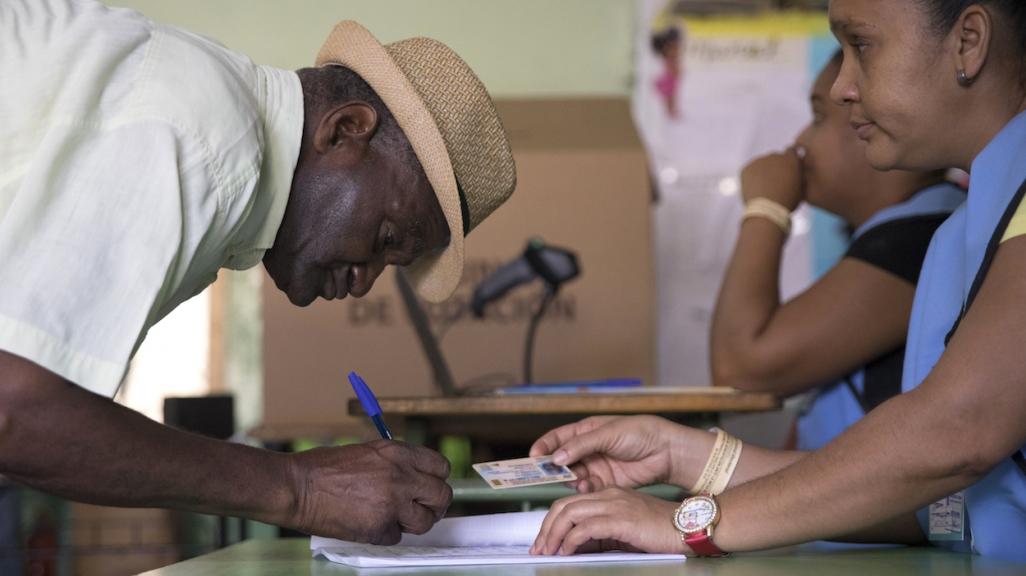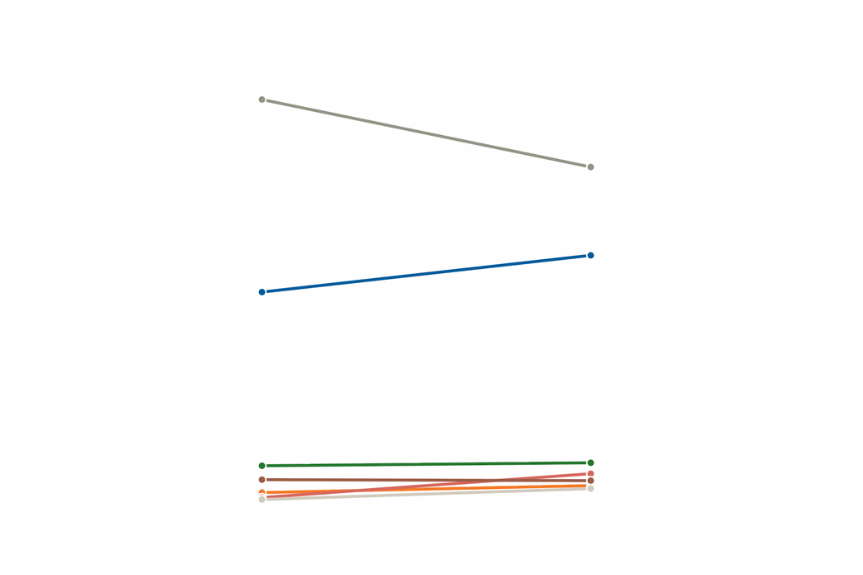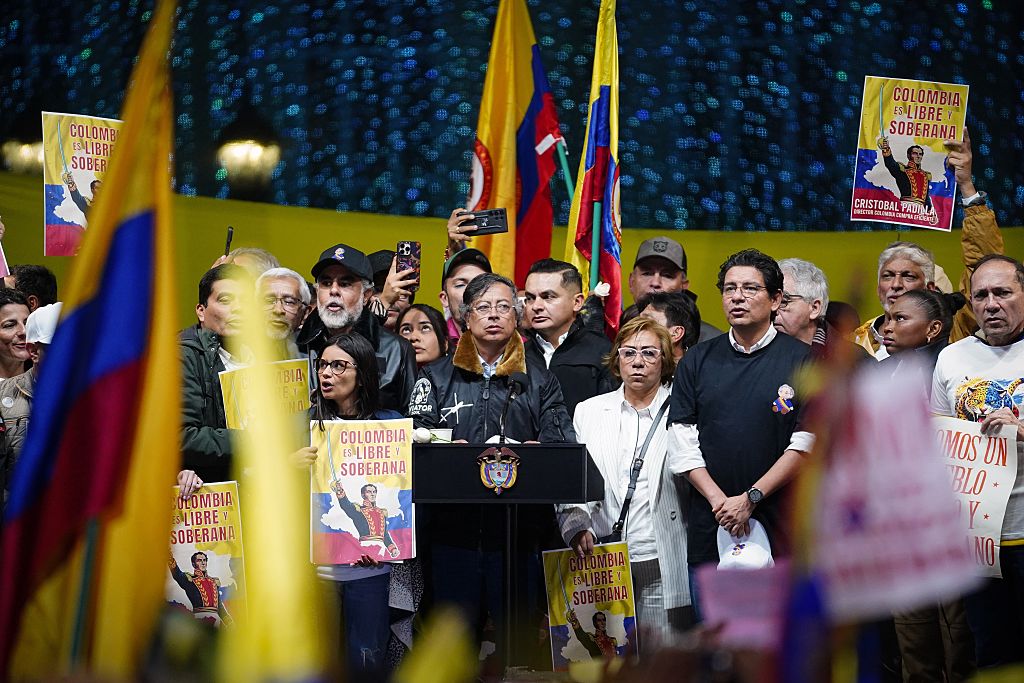Explainer: The Dominican Republic Gears Up for Two Crucial Elections
Explainer: The Dominican Republic Gears Up for Two Crucial Elections
Amid fears of voter fraud, the Caribbean country will hold special municipal elections on March 15—a test drive for the country’s presidential vote in May.
At 11:11 a.m. on Sunday, February 16, the Dominican Republic’s Electoral Board suspended nationwide municipal elections four hours into voting. It marked the first time the country suspended a vote, and the suspension took place well after voters began alerting polling station workers that an error in a new electronic voting system prevented them from seeing all the listed parties and candidates. While this new system was only implemented in 18 out of 158 municipalities, it was in Santo Domingo and other cities that collectively accounted for nearly two-thirds of the electorate. The suspension prompted Dominicans to take to the streets in protest for two weeks, denouncing alleged vote tampering and demanding transparency.
Amid an Organization of American States (OAS) investigation into the February malfunction, the Dominican Republic’s Electoral Board, known as the JCE, rescheduled the municipal elections for March 15, this time with paper ballots. More than 7.4 million Dominicans will vote to elect 3,849 positions across all 158 municipalities.
All eyes are on this new Ides of March municipal voting day as the country gears up for a general election to elect a new president, vice president, and all 225 seats in the country’s bicameral Congress on May 17.
An election malfunction that could have been prevented
The Saturday night before the February 16 vote, the JCE met with political party leaders and electoral observers after they reported seeing JCE technicians entering the polling places that day to work on the electronic machines. JCE President Julio César Castaños Guzmán told the attendees that technicians were working on an unspecified “error” with the new system, and that the issue would be resolved by 5 a.m. before polls opened at 7 a.m.
The software, which was used in 1,772 of the total 16,032 polling stations, was meant to speed up vote counting in cities and regions with high population density, while the rest of the municipalities used paper ballots.
The OAS is auditing the February election, per the country’s request, and 80 machines with the software were randomly selected for testing. Prior to the OAS audit, Dominican authorities arrested a police colonel and an information technology expert as part of a local investigation. The individuals were eventually released, and government officials asked the Justice Department to drop its investigation.
Protests erupted on February 16 and lasted 11 consecutive days, peaking on February 27—the country’s Independence Day. Thousands of Dominicans took to the streets for the Trabucazo 2020 march, a reference to the blunderbuss shot of February 27, 1844, that made the Dominican Republic a sovereign state after defeating Haiti in the Dominican Independence War.
This is not the first time the country has struggled with electronic voting systems. During the 2016 presidential election, it took JCE officials 13 days to release results after failures with the electronic voting system led to delayed counts.
A redo round on March 15
Per electoral law, in the case of canceled or annulled elections, a new date must be set within 30 days of the original vote. In this case, the date was set for Sunday, March 15, which the OAS agreed to observe. Among the 3,849 positions up for grabs, voters will elect 158 mayors and 158 vice mayors, 2,328 councilors and city council deputies, 470 district directors and subdirectors, and 735 district council members. All elected officials will take office on April 24.
The governing Dominican Liberation Party (PLD) stands to lose the most municipal posts after it won 107 mayoral posts out of 158 in 2016. On the other hand, the opposition Modern Revolutionary Party (PRM) only secured 30 mayoral posts four years ago and stands to gain more posts on Sunday. Though the PLD has controlled the country’s executive branch since 2004, the PRM has emerged as a strong opposition to the PLD’s hold on power since its founding six years ago.
This will be the first election in Latin America after government-implemented safety measures have gone into effect following the coronavirus outbreak in the region. The Dominican Republic’s Health Ministry confirmed its first case of COVID-19 on March 1. Though the Dominican government has restricted travel from Milan into the country and instituted strict screening guidelines at the country’s airports, it is still unclear if or what safety measures authorities will take if any for the elections on Sunday.
Looking ahead to May general elections
Dominicans will head back to the polls on May 17 to elect a president, vice president, 32 senators, and 190 deputies. There are six presidential candidates from five parties and one independent. A runoff is scheduled for June 28 if no presidential candidate wins over 50 percent of the vote during the first round. The winner will take office on August 16 and serve for four years.
Since incumbent President Danilo Medina of the PLD is term-limited after two consecutive terms in office, Gonzalo Castillo heads the PLD ticket with current Vice President Margarita Cedeño as his running mate. For the second election year in a row, Luis Abinader leads the PRM ticket with academic and businesswoman Raquel Peña as his vice president. Abinader lost to Medina in 2016 by 26.8 percent.
In a Greenberg Quinlan Rosner (GQR) poll published on March 3 by Diario Libre, Abinader enjoyed a 28-point lead over Castillo, with 52 percent of voters saying that they would vote for Abinader if the election were to take place on the day of the poll, which was conducted between February 21 and 24. In response to polling that put him in second place, Castillo said that the “true poll” will be the March 15 special elections, where his PLD party “will win the majority of the municipal candidacies.”
Former President Leonel Fernández (1996–2000, 2004–12) is also running, this time under the People’s Force (FP), a party he created in October after leaving his post as president of the PLD. Sergia Elena de Séliman of the Social Christian Reformist Party is his running mate. Before and after the February municipal elections, Fernández opposed implementing electronic voting, saying the software could easily be manipulated. The GQR poll put him in third place with 17 percent.
Presidential candidates Ramfis Domínguez-Trujillo of the Country Alliance and Guillermo Moreno of the National Citizen Will Party received 3 and 2 percent of voter support, respectively, in the GQR poll.









